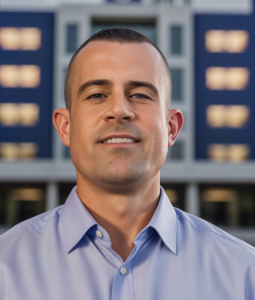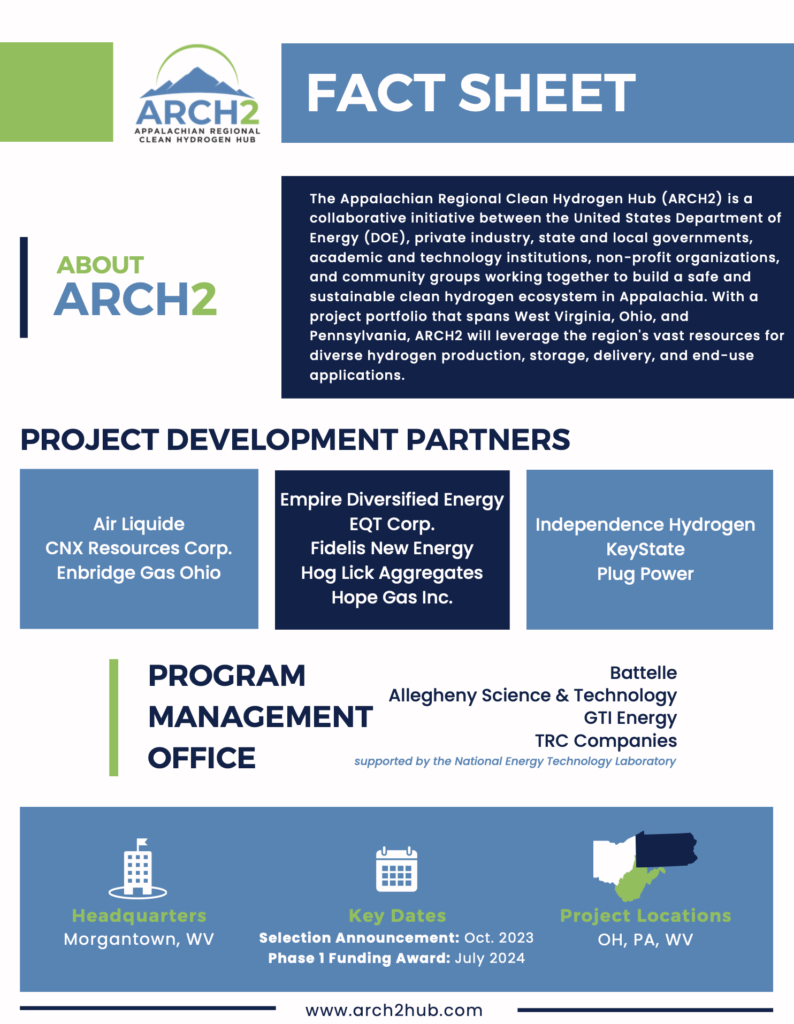
AST recently attended the ARCH2 ribbon cutting ceremony to celebrate the official award announcement for the Appalachian Regional Clean Hydrogen Hub (ARCH2) and the opening of the ARCH2 Program Office. This moment is pivotal in advancing hydrogen power in Appalachia, signaling the beginning of a new chapter in cleanenergy with the potential to reshape our region and influence the future of hydrogen technology on a broader scale. With this milestone in mind, we asked AST Communications Manager for ARCH2 Kyle McColgan about the importance of this moment as we look ahead to the future of this initiative.

Kyle McColgan
What are some of the most exciting aspects of ARCH2? What are you, your team, and the broader community most excited about?
What really excites me is the ARCH2 project portfolio and the range of innovative clean hydrogen production methods and end-uses our Project Development Partners (PDPs) have planned. One of the ways ARCH2 sets itself apart from the other regional H2Hubs is the diversity of our proposed projects in terms of the proposed technologies, hydrogen production feedstocks, delivery pathways, and end-uses. From producing hydrogen via anaerobically digested food waste to creating low-carbon aviation fuel, ARCH2’s PDPs are truly pioneers in the clean energy transition.
How is the ARCH2 hub expected to influence the local economy in Appalachia, and what role do you see it playing in the region’s future?
Building an equitable, safe and sustainable clean hydrogen economy is at the core of ARCH2’s vision for the region. Over the medium and long term, we believe ARCH2 will have a transformative effect on the local economy and transform the region into a leader in the clean energy transition, creating jobs, attracting investment, and promoting economic diversification and sustainability.
What inspired you personally to take on this role with ARCH2? How does it resonate with your own values and vision for the future?
Appalachia is located squarely between where I grew up—the suburbs of Cleveland, OH—and where I worked for many years—Washington, DC. My frequent travel between Cleveland and DC gave me the opportunity to explore the region and discover its beauty. As someone who is passionate about public policy, over time I noticed that many of our elected leaders often overlooked Appalachia in discussions about the energy transition. Despite the region’s history as an energy powerhouse, it became clear that Appalachia – in particular, former coal communities – was being left out of critical conversations about the future of energy production.
This realization is what led me to take a position with ARCH2. I knew that the hub had the potential to bring Appalachia back into the spotlight of energy policy discussions, giving the region a strong voice and ensuring it remains an energy powerhouse for the nation. My goal is to advocate for the inclusion of Appalachia in these critical policy debates and to make sure the region benefits from the opportunities presented by the clean energy transition.
How have you seen the AST team really come together in supporting key milestones for ARCH2 over the last year?
AST’s work for ARCH2 has been a true team effort, and our strong support of one another is a big reason why ARCH2 has been successful. From the early stages of initial planning and the application process to award negotiations through today, every member of our team has played an integral role in ensuring ARCH2’s success.
Can you share a fact or statistics about the use of hydrogen (or ARCH2 as a whole) that you have learned or that has surprised you?
Hydrogen usage is being propelled by a global movement led by the U.S. According to the IEA, more than 30 countries have released national hydrogen strategies, with significant investments and policy frameworks aimed at accelerating the adoption of hydrogen in their energy mixes. By 2050, the global clean hydrogen economy is expected to top $2.5 trillion annually and create 30 million jobs (source: Hydrogen Council). It is an exciting time to be involved in the hydrogen industry.
–
About Kyle McColgan
Kyle McColgan is an accomplished communications and public affairs strategist with over a decade of experience driving high-impact advocacy efforts for leading global corporations and trade associations. Currently, he leads communications for the Appalachian Regional Clean Hydrogen Hub (ARCH2) at Allegheny Science and Technology, playing a pivotal role in shaping the future of clean energy in the region.
Before joining Allegheny Science and Technology, Kyle worked as a public affairs consultant in Washington, DC, where he led the design and execution of high-impact third-party advocacy, strategic communications, and issue campaigns for some of the world’s most recognizable brands and trade associations, including AT&T, USTelecom, and CTIA – The Wireless Association.

